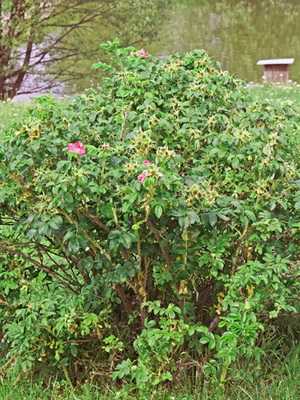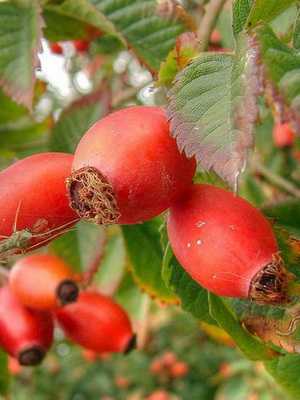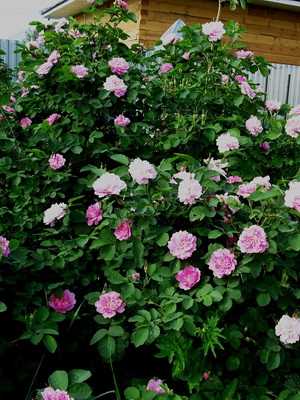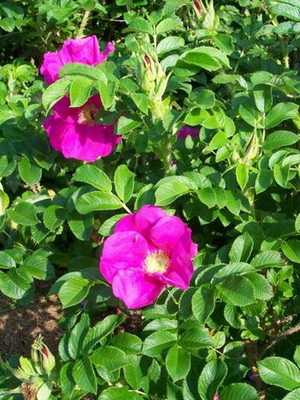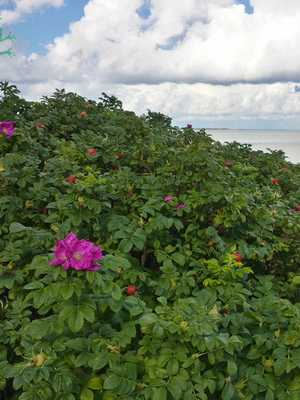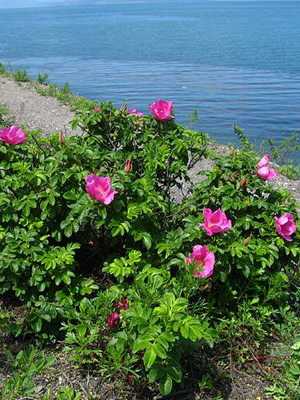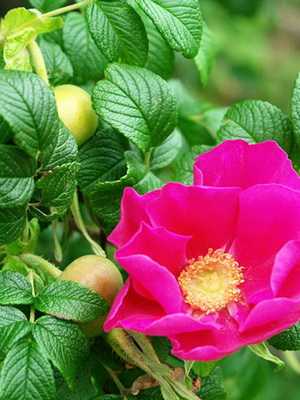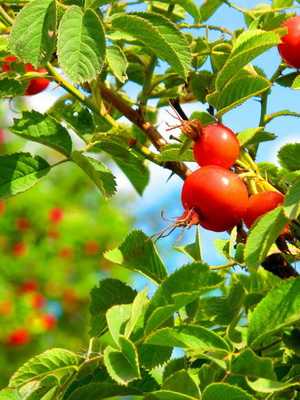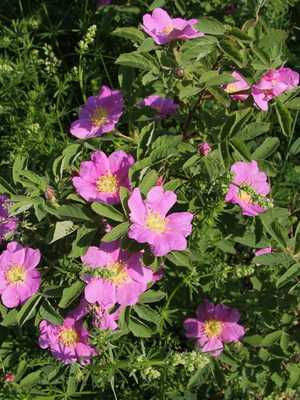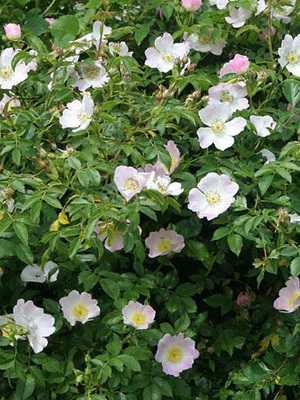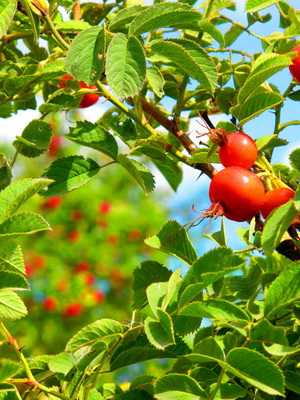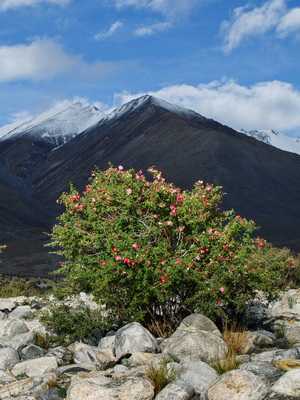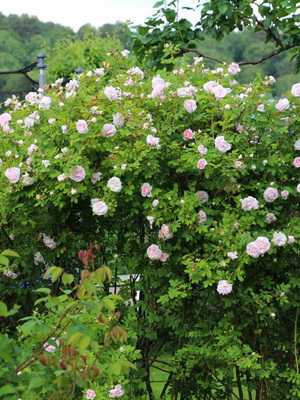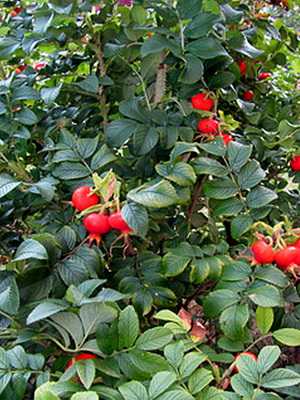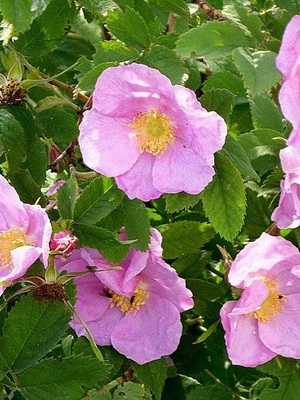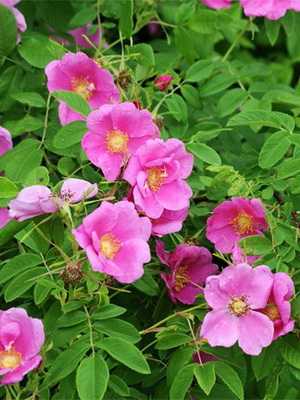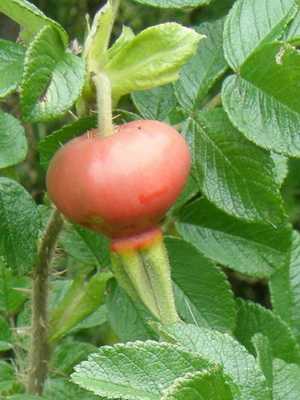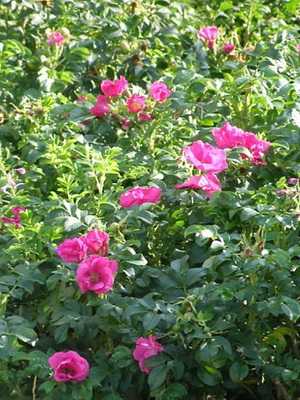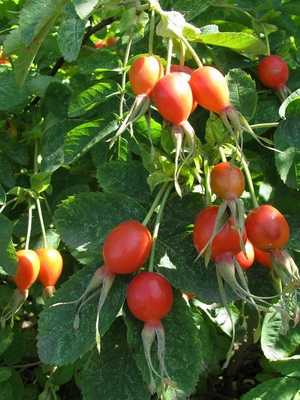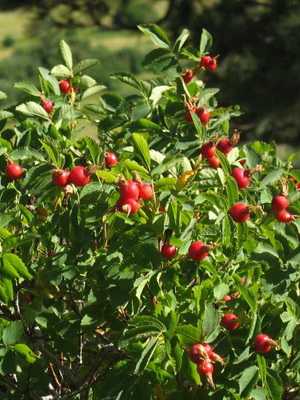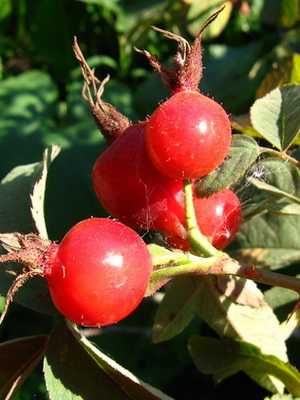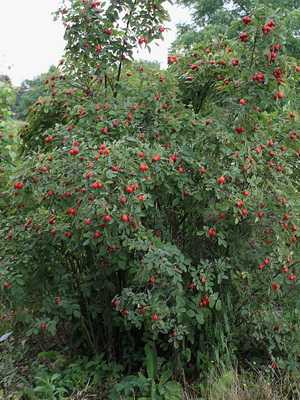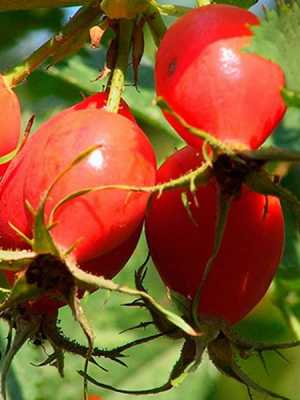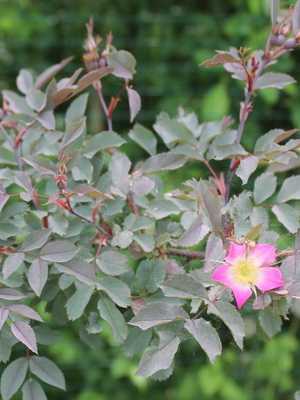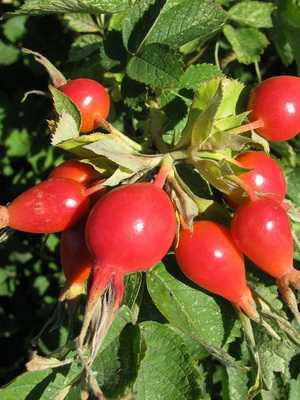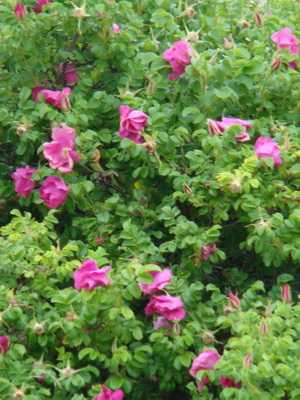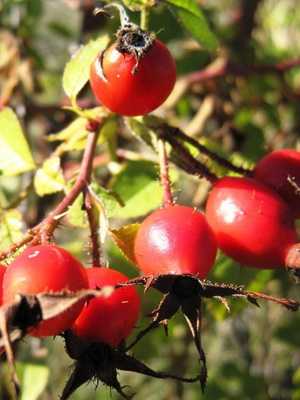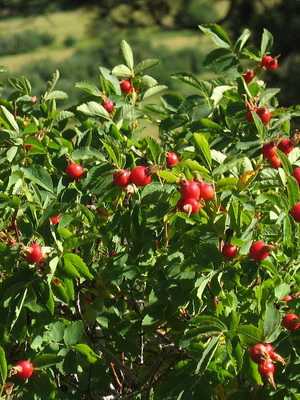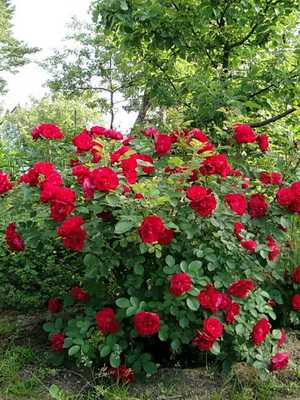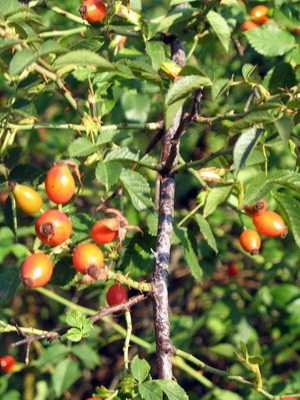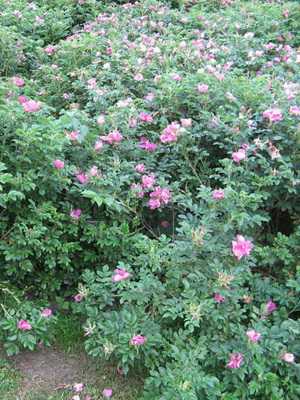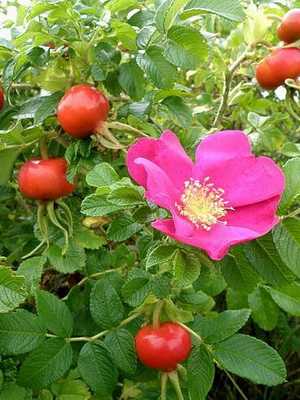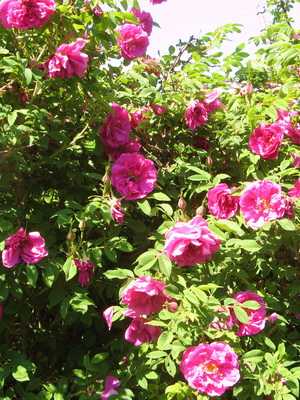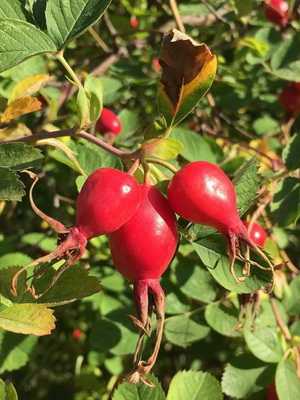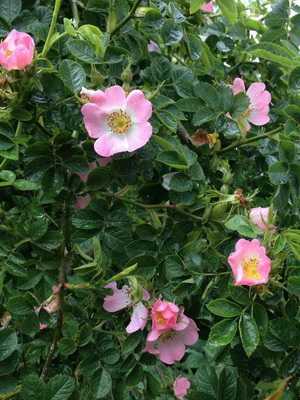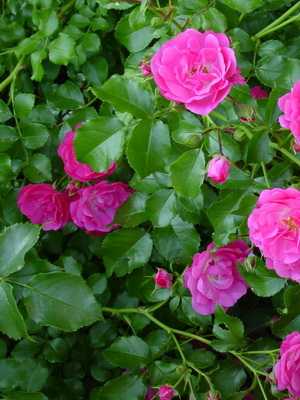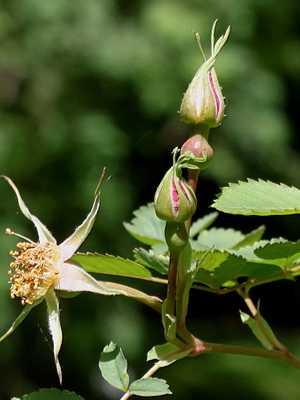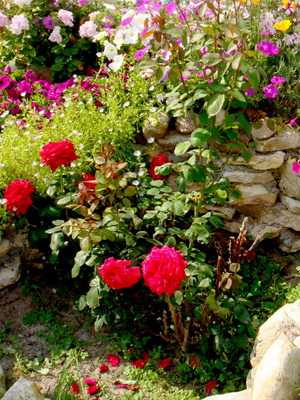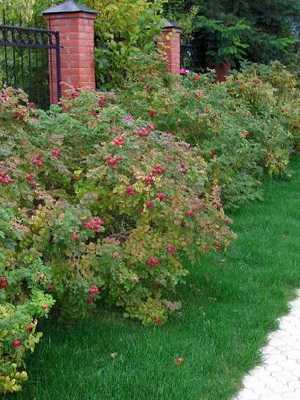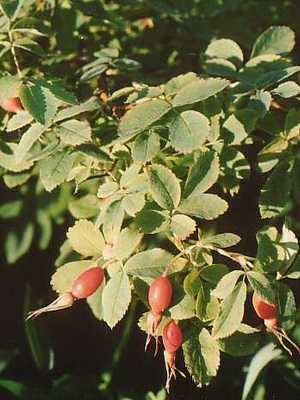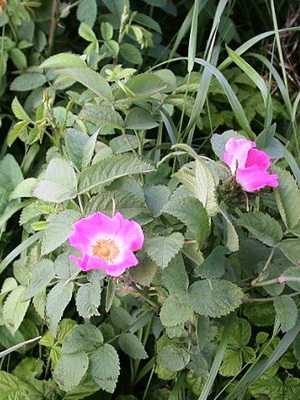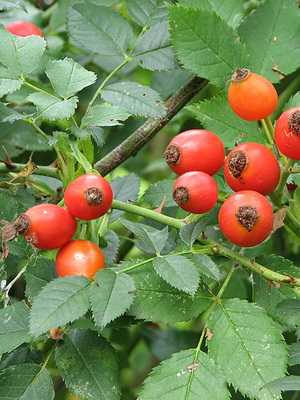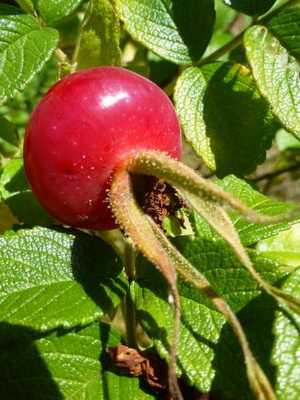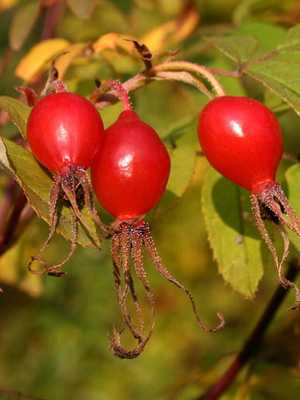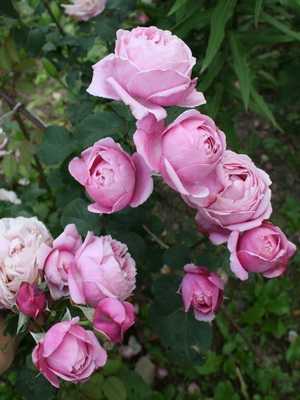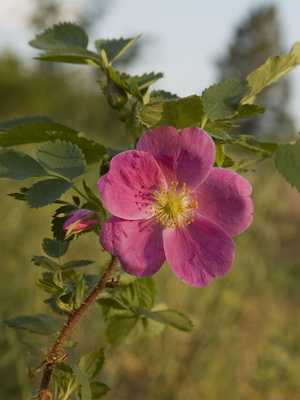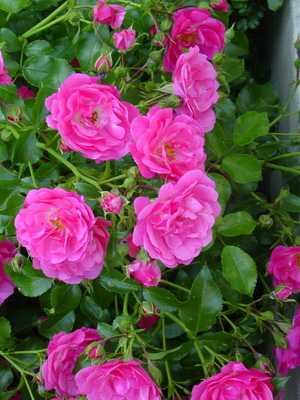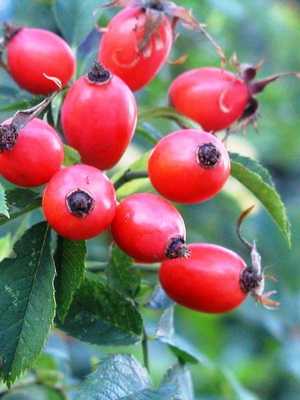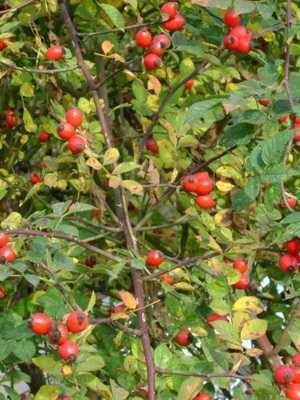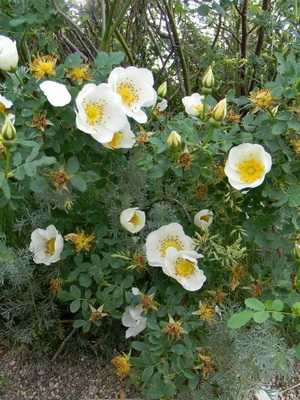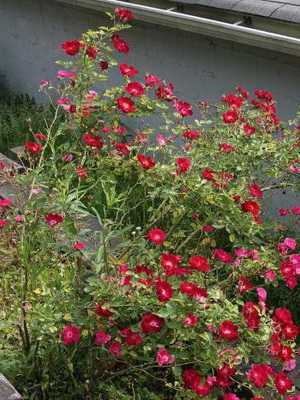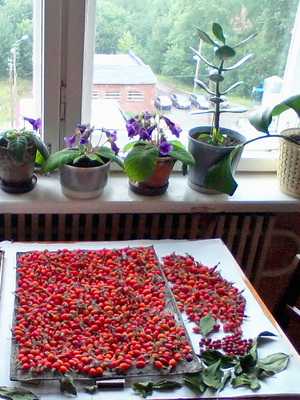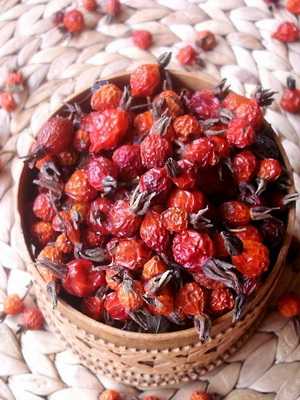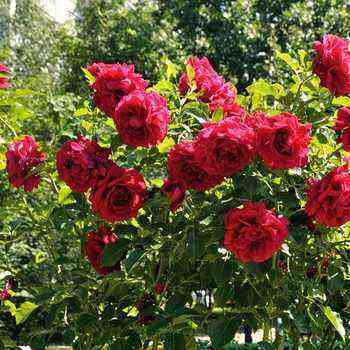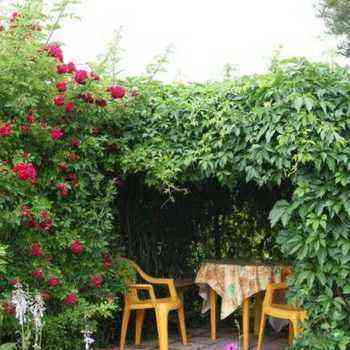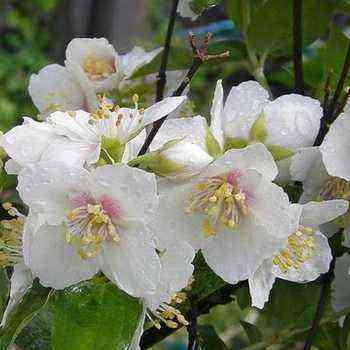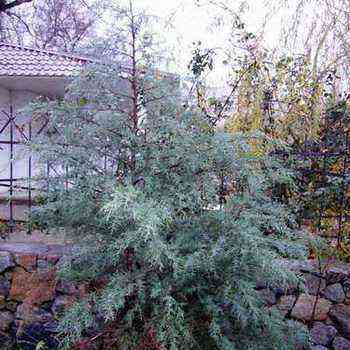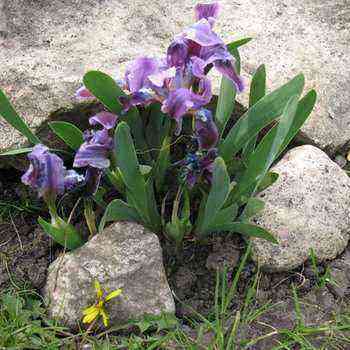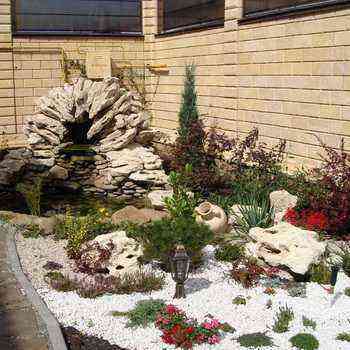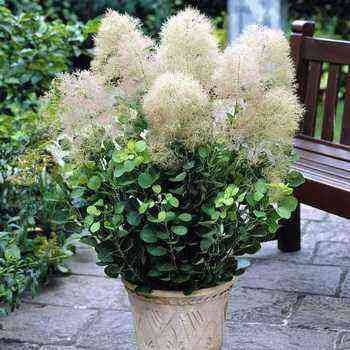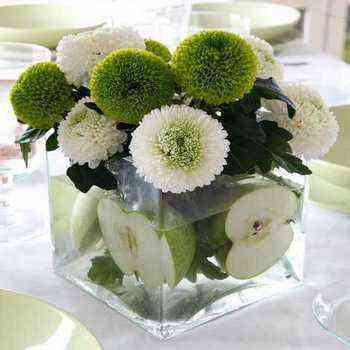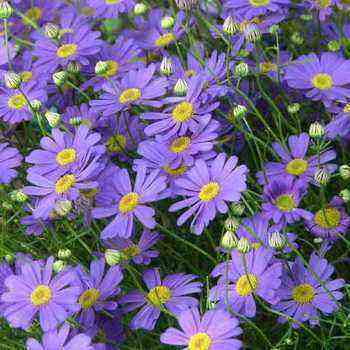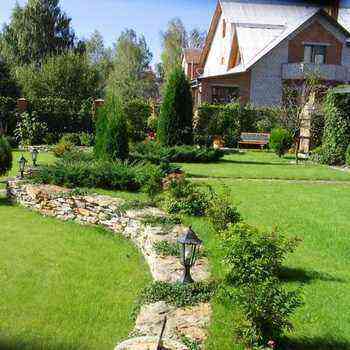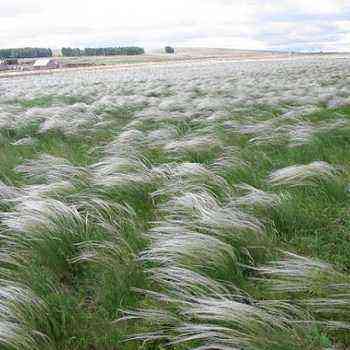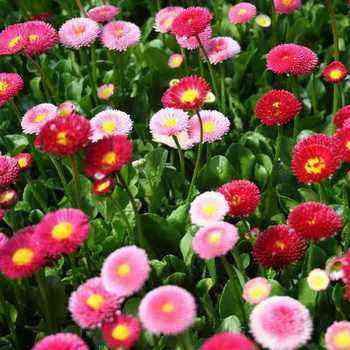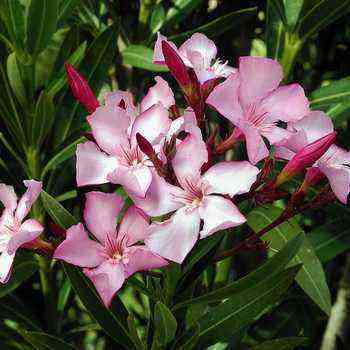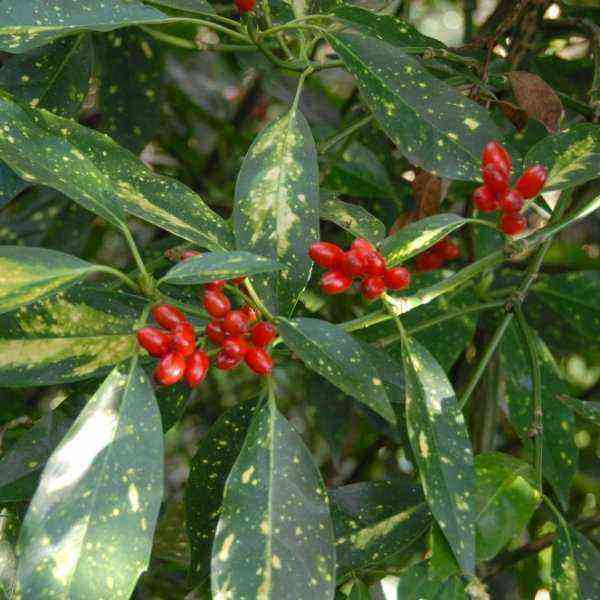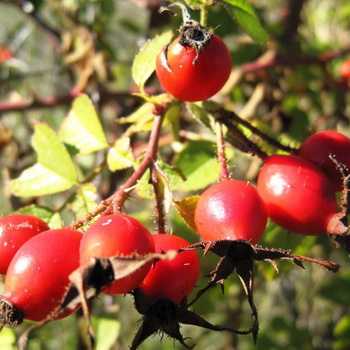
Where does the rosehip grow and the characteristics of the plant
The rosehip plant belongs to the Rosaceae family, its homeland is in the regions of the Northern Hemisphere.
Rosehip is a wild shrub. The people often use the name – wild rose. For a long time it was used for food, medicines and paints were extracted from it, beautiful flowers and fruits served as decoration, its thorns were used as protection.
Where does the wild rose grow in natural conditions? This shrub grows in the warm and temperate climates of the Northern Hemisphere. Certain species of rose hips penetrate north up to the Arctic Circle, and south to Ethiopia, Arabia, North India and the Philippine Islands, in North America to Mexico. Particularly favorable conditions for its growth are found in the region from the Mediterranean to the Himalayas and further in East Asia, where it forms vast thickets. The largest thickets of this plant can be found in regions where the steppe terrain prevails. Moreover, in the steppe itself it will be much less than in small forests and plantings growing on this territory. In addition, rose hips can often be found in ravines.
As you can see in the photo, rosehip bushes grow singly or in groups along the edges and in the undergrowth of coniferous, deciduous and mixed forests, in light forests, floodplain and ravine forests, along rivers, near springs, on damp meadows, on rocky and clay cliffs, on plains and in the mountains at an altitude of 2200 m above sea level:
Rosehip is mainly confined to the forest zone, but forms a shrub layer in larch forests along the river valleys of the Siberian continental tundra, in the uremic forests of the Trans-Ural steppes, for example, in the northern part of the valleys of the Ural and Emba rivers. Certain species of wild rose form shrub areas of steppes and even deserts. Some species are found in the mountains up to the subalpine belt, up to an altitude of 2000–3500, and in tropical countries up to 4000 m above sea level.
Wild rose hips are frost-resistant, drought-resistant and undemanding to the soil. The most productive rosehip bushes are found on loamy, moderately moist soils. Rosehip does not grow on dry and overly wet soils.
Here you can see a photo of a blooming rose hip of different types:
In the course of evolution, the dog rose has developed thorns and bristles as a mechanical defense against being eaten by herbivores. But this did not prevent some species of animals from adapting to this protection and thus having an advantage over other species. It is known that camels, sheep and goats easily cope with the most thorny plants. Juicy, bright, rose hips that stand out against the background of green foliage serve as food for birds, mammals, rodents and reptiles. Animals leave indigestible rosehip seeds on the ground along with excrement, often at a considerable distance from the plant itself and contribute to its spread.
Rosehip fruits serve as food for black grouse, hazel grouse, gray partridge, gray crow, jackdaw, nutcrackers, starlings, Muscovy tit, and miser’s thrush. The fruits of the rose hips are eaten by the hare, the yellow-throated mouse, the red vole, and the fox. In predators such as the fox, juicy fruits are a constant admixture of animal food. The bank vole takes away seeds and juicy fruits of plants and makes small reserves of them.
Most of the species and varieties of temperate and cold rose hips bloom for a short time – from May to July. Subtropical wild roses have continuous flowering. The fruits ripen in August, gradually acquiring a yellow, red color and remain on the branches until winter.
These photos show what a dog rose looks like in its natural habitat:
What flowers, leaves and berries of rose hips look like, photos of flowering bushes
Here you can familiarize yourself with the botanical description of rose hips – a shrub with a height of 1 to 2 meters and more.
This photo shows that the leaves of the wild rose are complex, pinnate, have from 3 to 11 elliptical ovoid leaves:
Bloom in June – first half of July. Fruits ripen in August – September, red, pink or dark red.
The roots penetrate to a depth of 1–2 m.
Look at the photo – rosehip flowers are correct, most often fragrant, sometimes with pronounced doubleness, collected in corymbose or paniculate inflorescences, almost always with a pleasant aroma, white, pink, purple or yellow:
The most common rose hips (wild roses) are: R. dog (R. canina), p. dahurian (R. dahurica), p. spiny (R. acicularis), p. cinnamon (R. cinnamomea), p. gray (R. glauca), p. wrinkled (R. rugosa), p. femoral (R. pimpinellifolia), etc.
The most important and useful part of the rose hips is the pulp of the berries. It is in it that valuable substances and organic acids accumulate. In addition, rose hips are a whole storehouse of macro- and microelements: magnesium, phosphorus, iron, potassium, silicon, copper, manganese and many others. For example, these berries contain 50 times more vitamin C than lemons, 10 times more than currants, and 100 times more than apples.
How to distinguish a rose from a rose hip? Here is how a gardener with many years of experience and the author of numerous books, GA Kizim, answers this question: “It’s very simple. The young shoots of roses are always colored red, while the young shoots of the rose hips are green. ” Then she continues, talking about the correct cultivation of rose hips: “All roses and rose hips prefer oily black clays. If you do not have such, then mix well-rotted compost, or even better manure (fresh manure cannot be applied for planting roses!) In half with the clay that you have. It is better to plant them so that the morning sun falls on them, that is, the eastern sun, and at noon there would be an openwork partial shade above them, then they will not fade and quickly fade. But the midday sun is better than partial shade. Roses bloom very poorly in the shade.
Many gardeners are asking the following questions.
Why aren’t rose hips eaten fresh?
They are not consumed raw because of the hairs in the seed capsule. The fruits are removed until they are soft, dried and boiled with boiling water, making a vitamin drink.
How to distinguish the fruits of wild rose hips from the real, vitamin?
The fruits of real vitamin rose hips can be easily distinguished from those of wild or any other rose hips by the sepals that remain on the fruit.
Pay attention to the photo – rosehip berries of vitamin varieties are directed forward, and in a wild or decorative species they are bent back:
Can a rosehip be used as a hedge?
Sure you may. Rosehip, gradually expanding, forms whole thickets, impassable and thorny, through which it is difficult to wade. But only this hedge should be monitored, the aging stems should be cut to the ground about once every 3-4 years, otherwise your hedge will gradually turn into dead wood.
Gooseberry growing conditions, planting and care
The rose hips have an important characteristic: they have the ability to form new branches every year. This allows you to restore the ground part in a fairly short time, if it was damaged or destroyed. It is best to plant a shrub on fertile and moisture-rich soils, since the plant is warm and light-loving. Rosehip has a low need for the duration of winter organic dormancy, therefore, with prolonged thaws, the winter hardiness of this plant usually decreases, which can lead to freezing after the onset of cold snaps in the spring.
New flower buds, the basis of next year’s fruiting, are partially laid on the branches of two to three-year branches, which have the least winter hardiness.
For ease of care when planting, rosehip seedlings are best placed on an area with a flat surface or a gentle slope without microdepressions. It is desirable that the slope of the surface is directed to the south or southwest side. Valleys and floodplains of rivers with fertile soils and a high content of humus and phosphorus are also suitable for planting rose hips, if they are not exposed to flooding for a long time. Rosehip is a moisture-loving plant, so the yield will be high only if this plant is regularly supplied with soil moisture.
Soil preparation should be started six months before planting. During this time, it must be carefully dug up (mid – late summer), after fertilizing with manure at the rate of 10–12 kg per 1 m2. Further, until autumn, the site should be kept in a weed-free state and periodically loosened.
In the fall, it is necessary to dig planting holes 30 cm deep and 50 cm wide and add a kilogram of rotted manure to them. The distance between the holes in a row should be equal to 1 m, between the rows – 3 m.
Immediately before planting, the roots of the seedlings must be dipped in a mixture of equal parts of clay, humus and water. This is to prevent them from drying out. Then the seedlings should be placed in the pits and the roots should be covered with earth, compacting it at the same time. After this, the plants should be watered abundantly, and the soil around the seedlings should be sprinkled with dry earth and mulched with peat, sawdust or finely chopped straw. Planting is best done in the fall, before the onset of frost and freezing of the soil, or in early spring, before the buds have blossomed.
In order for the plants to be better pollinated, it is necessary to plant several varieties of rose hips (2-3), alternating their rows. It is advisable to have at least one colony of bees on the site, since these insects are the best pollinators for rose hips.
Rosehip has a powerful root system, it grows quickly and can be used to strengthen the soil and combat the phenomena of soil erosion (if the need arises).
Rosehip loves lighted areas where there is a lot of sunlight. It will grow best in elevated areas with fertile soil, in which there is no stagnant groundwater. Rosehip roots go very deep into the ground, so do not plant it on swampy and low-lying soil – it will quickly wither and die. In terms of the growth of the root system, dog rose is similar to raspberry: after a few years of plant life, its roots grow in the upper layers of the soil and begin to occupy vast areas. To prevent it from spreading, you need to fence the bushes with a small ditch 20-30 cm deep or dig in pieces of slate to the same depth.
You can plant rose hips along the border of the personal plot (to protect it) or in separate bushes in the most inconvenient places: near a compost heap or next to an outbuilding.
Saplings are planted in autumn and spring. Before planting, the site is prepared as usual. The distance between the plants is 1,5–2 m. For planting, holes are dug with a diameter of 60 cm and a depth of 50 cm. The earth from the upper vegetation layer is mixed with 10–15 kg of organic fertilizers, 3 tbsp. Of mineral fertilizers are added. spoons of superphosphate, 2 tbsp. tablespoons of potassium sulfate and 2 tbsp. tablespoons of urea. The prepared mixture is filled with a pit and a seedling is planted.
During the cultivation of rose hips, when caring for shrubs during the growing season, loosening of the soil, thinning of bushes, pruning of old, weak and broken shoots, root and foliar feeding are carried out.
Root dressing is carried out before and after flowering and after complete harvesting of fruits: dilute 10 tbsp per 1 liters of water. tablespoons of urea, nitrophoska and 3 tbsp. spoons of liquid organic fertilizer “Effekton for berry crops”. Consumption of solution 10-15 liters per bush.
The second root dressing is carried out immediately after flowering: 10 tbsp is diluted in 2 liters of water. spoons of “Potassium Humate” for fruit crops and 3 tbsp. tablespoons of Effekton-2 liquid organic fertilizer: up to 1 liters of solution are poured onto 15 bush.
The third top dressing is the last: 10 tbsp is diluted with 2 liters of water. tablespoons of superphosphate and 1 tbsp. spoon of potassium sulfate, consumption of 10 liters per 1 bush.
To increase the yield and quality of fruits when growing rose hips, foliar dressing is carried out after flowering 3 times with an interval of 10 days: 10 tbsp is diluted for 2 water. spoons of “Potassium humate” universal.
Rosehip is harmed by green rose-colored aphids, leaf rollers and spider mites. Against these pests, rosehips are sprayed before flowering and after the fruit is completely harvested by natural means: take 500 g of garlic, pass it through a meat grinder, then this pulp is diluted in 8 liters of warm water, add 1 tbsp. spoon of tar or laundry soap and leave for 5-6 hours, then filter and spray. This procedure is carried out before flowering, and after flowering, they are sprayed with garlic, they also take 500 g or more effective Iskra DE (1 tablet per 10 liters of water).
Some types of rose hips are prone to rust. In this case, you need to sprinkle with Topaz: 1 ampoule (2 ml per 10 liters of water). For black spot, spray with 1% Bordeaux liquid or copper oxychloride (Hom) (20 g per 10 l of water) when signs of disease appear.
Rosehip varieties: photo and description
Further you can familiarize yourself with the photo and description of rose hips of different varieties and types.
Rosehip unites about 400 species, distributed mainly in the Northern Hemisphere. It is especially abundant in the north of the European part of our country, in the Middle Volga region, Western and Eastern Siberia, and the Far East. The most pronounced medicinal properties in cinnamon rosehip (May) and wrinkled.
Recently, new varieties of rose hips have been created by the method of interspecific hybridization. They are distinguished by their greater size, yield and content of biologically active substances.
The most common and valuable varieties are:
Vitamin VNIVI, Jubilee, Large-fruited VNIVI, Vorontsovsky 1, 2, 3, Russian 2.
Jubilee
A medium-ripening variety, it is a strong and powerful shrub up to 1,5 m in height. The fruits of the plant are large, round-shaped, orange-red, sweet and sour to taste, rich in vitamin C.
See how beautiful the rosehip plant of this variety is during flowering – large pink flowers look just great on the bush:
The fruits are suitable for both jam and drying.
Oval
A variety of medium ripening. Rosehip bush Oval grows small, flowers are also not too large, white. Fruits are slightly flattened, red, with thick skin and sweet juicy pulp. The variety is frost-resistant, not susceptible to disease, insects rarely damage the bushes. Berries are most suitable for processing, but also suitable for drying.
globe
The variety is a medium-sized shrub up to 1,5 m high with thick branches and large flowers. Fruits are globular, bright red, characterized by a high content of vitamin C. There are so many ripening of them that the shoots bend under their weight. Globus variety belongs to winter hardy. This rose hip is suitable for making preserves, jams and candied fruits.
Apple
Rosehip of the Yablochny variety usually does not grow higher than 1,2 m, nevertheless, in terms of yield, it is not inferior to tall varieties. The flowers, like the fruits, are dark red. Rosehip berries of this variety are large and often grow in groups of 5-7 pcs. They have a flat-round shape and a sweet and sour taste. A bush with ripe fruits looks very elegant.
Vitamin VNIVI
An early variety of rose hips with large fruits and a medium ripening period. The bush can grow up to 2 cm in height. The flowers are medium-sized, pale pink, collected in inflorescences. The fruits ripen red-orange in color, oval in shape.
When describing this rosehip variety, it is worth noting that it is resistant to diseases, tolerates frost well, and is rarely attacked by pests. However, it is worth taking into account that the variety does not belong to self-pollinated, which means that another rosehip bush of a different variety should grow nearby.
Vorontsovsky 1
The cultivar is an interspecific hybrid of the Webb rose and the wrinkled rose. Oval-elongated fruits are not only high in vitamin C, but also in folic acid. Orange-red berries are good for drying. Up to 3 kg of crop can be harvested from an adult bush. Long-term fruiting. The variety is of medium ripening, relatively cold-resistant.
Titanium
A very effective variety with powerful shoots and large fruits. Rosehip of medium ripening. The plant bush can reach a height of 2 m, during flowering it becomes a real decoration of the garden. The Titan variety blooms very beautifully: with delicate light pink flowers. Fruits are formed in clusters of 3-5 pieces. The variety is disease-resistant and cold-resistant. The fruit is best for drying.
Ruby
Rosehip early ripening. Refers to vigorous varieties. The flowers are medium-sized, pale pink. The round-oval orange berries turn dark red when ripe. They have a sweet and sour taste and are well suited for drying.
Cinnamon Rose
Grows as a shrub up to 2 m high with thin brownish-red shoots. The thorns are whitish, curved, often arranged in pairs, the spine of the shoots is from strong to weak.
Leaves are compound, pinnate, with 3-11 elliptical or ovoid leaflets.
The flowers are pink, solitary or 2-3 per inflorescence. The fruits are orange-red, of various shapes.
Cinnamon rose is photophilous, grows well on forest edges, forest glades, river floodplains and along their banks. The life span of the bushes is 20–25 years with periodic replacement of individual branches, which grow old and die off by the age of 4–5 years. Under natural conditions, a cinnamon rose gives 1-3 kg of fruit per bush. The plant is winter hardy.
Rose wrinkled
Distributed everywhere. Forms well-developed bushes up to 1,5 m high. The branches are sinuous, covered with small, brush-like thorns.
The leaves are dark green, leathery and wrinkled; by the fall of the leaves, they acquire a beautiful lemon-yellow color.
The flowers are dark purple, red, pink, white, up to 8 cm in diameter, very fragrant, bloom in May. Flowering continues until autumn.
Wrinkled rose is a remontant plant. Its fruits ripen gradually, until autumn frosts in October, but most of them ripen within 20-30 days.
As you can see in the photo, the fruits of this rosehip are red-orange, fleshy, 2–4 cm in diameter, squeezed from the poles:
This plant is more productive than cinnamon rose. From one bush, you can collect up to 3-4 kg of fruit.
When propagated by seeds, seedlings can vary greatly in yield and produce low-yielding forms, therefore, selected forms or varieties should be used. The life span of plants is up to 20–25 years, with periodic replacement of individual branches every 6–7 years.
Rose dog
It is widespread in the Black Earth Region. It grows in the form of a powerful sprawling shrub with arcuate greenish or red-brown shoots, up to 1,5-3 m high. Its thorns are rare, hook-shaped. The leaves are green, elliptical, sharp-serrate, 5–7 per leaf.
Pay attention to the photo of this rosehip variety – its flowers with pale pink petals are quite large, up to 8 cm in diameter:
Blooms in late May and early June.
The fruits of this rose are oval-ovoid, red in color. They are a medicinal raw material for the production of holosas. They contain a lot of seeds and are not rich in vitamin C.
The bushes of this rose hip are very good to use for rootstock when propagating garden roses.
This plant is unpretentious, winter-hardy, least of all affected by diseases and pests.
Rose webb
The homeland of this dog rose is Central Asia. It is represented by a bush with a height of 1–2 m. Its shoots are covered with straight thorns, thickened at the base. Leaves consist of 7-9 rounded leaflets with jagged edges. Fruits are spherical, red, fleshy, rich in vitamin C. The species is winter-hardy and unpretentious.
Rose adorable
The species is represented by a bush with a height of up to 2 m. Its flowers are pink, single or in the form of umbrellas, medium size, up to 5 cm in diameter. It is a good honey plant and has excellent decorative qualities.
Look at the photo – rosehip bushes of this variety look great on alpine slides:
Rose needle
A bush with a height of up to 2,5 m, the shoots of which are very densely covered with thin needle-like thorns. Flowers are small and medium, pink, pale pink, violet-pink, sometimes white. The fruits of this species are cherry red in various shapes: elliptical, pear-shaped, oblong and ovoid, spherical.
Rusty red rose
The species is represented by a bush, the young shoots of which are very densely covered with thorns of various sizes, they can be straight and curved. The flowers of this plant are bright pink, collected in dense shields. The fruits are orange-red. A distinctive feature of this rose hip is the strong aroma of fresh apples, which emanate from the leaves, on the glandular hairs of the latter there are drops of aromatic resin.
Apple rose
The species is represented by a rather tall shrub, with a growth height of up to 3 m. The leaves consist of oblong-oval leaves. Flowers with a pink corolla. The fruits are quite large, almost the size of a wild apple, from which the species got its name.
Pay attention to the photo of this rose hip variety – when its fruits ripen, they are yellow with toasted sides:
The content of vitamin C in fruits is up to 1600 mg per 100 g.
Rose Daurskaya
The species is widespread in the Far East. It is represented by a short, strongly branching shrub with a height of up to 1,5 m. Its shoots are covered with protruding, slightly curved thorns. Flowers of medium size, up to 4 cm in diameter, single or in inflorescences, pink or dark pink. Fruits are dark red, spherical-ovoid.
Alpine rose The species is represented by a low-growing bush with a height of no more than 1 m. Its distinctive feature is that its shoots do not have any thorns, so the saying goes in vain that there is no rose without thorns. This dog rose grows in the mountains of Central Europe.
In the photo of this type of rose hips, it can be seen that its fruits have an elongated fusiform shape, are colored dark red, and look like catkins on the shoots:
French rose
The species is common in southern Europe, southern Ukraine and the European part of Russia. It is represented by a low-growing bush with a growth height of less than 1 m, little branching, often forms whole thickets. He is the founder of many varieties of garden roses. Shoots are densely covered with small thorns and thorns. The flowers are large, bright red.
Here you can see a selection of photos of the varieties and types of rose hips presented above:
The use of rose hips
Rosehip is a shrub from the rose family, which is popular with gardeners due to its external data and healing properties. This plant is widely used in medicine, and not only in folk. Rosehip fruits contain many vitamins and substances useful for the human body (ascorbic, malic, citric, linoleic, oleic and other acids, flavonoids, pectins, tannins, vitamins B1, B2, P, PP, A, K, E, iron salts, phosphorus, manganese, etc.).
For medicinal purposes, rose hips are best harvested in September. But it should be remembered that over time, the amount of vitamin C in berries decreases, and the amount of sugars increases. Moreover, this transformation is visible with the naked eye: the fruits begin to darken over time, especially autumn frosts and the first frosts contribute to this.
In terms of vitamin C content, rosehip has no equal. For example, it is 100 times higher than the content of vitamin C in apples, 3-4 times in lemons and sea buckthorn. In addition to vitamin C, rosehip contains vitamins P, K, B1, B2, B6, pectins, tannins, sugars, organic acids, macro- and microelements. The seeds contain fatty oil rich in carotene and vitamin E.
Rosehips are valuable ornamental shrubs suitable for single and group plantings, creating hedges, curbs.
Jam is made from the petals of rosehip flowers, and raw materials for the perfumery industry are obtained.
They are rootstocks for cultivated varieties of roses. In medicine, rose hips are used as a vitamin raw material.
Rosehip is a wonderful honey plant, its beautiful and fragrant flowers attract many bees to the garden.
In the fall, the dog rose will also decorate the site with bright fruits and foliage, in addition, its berries attract birds, which in turn will help you in the fight against pests of the garden and vegetable garden.
Pruning rosehip bushes (with photo and video)
In the first year after planting, the rose hips are shaped like ordinary roses. Remember that all types of rose hips need shaping and pruning, but almost no pruning of the p. wrinkled and p. prickly. Shoot-forming ability of wild rose is high. In the first year of cultivation in young plants, a strong pruning is carried out, stimulating the powerful growth of basal shoots and the formation of a bush with shoots evenly spaced along the periphery of the crown. When pruning, weakly growing rose hips are pruned much more strongly than strong growing ones.
For almost all types of rose hips, thinning of the bushes is necessary after some time. For this, almost all old branches are cut to the level of the soil and 5 – 6 healthy strong shoots are formed again.
At the end of flowering, the shoots are shortened in the wild rose. In tall bushes with bare branches, each is cut off by half the length. In the middle lane, it is best to do this in April.
Rosehip pruning is carried out either in the fall, after leaf fall, or in the spring, before bud break.
Formation is completed in the fourth year. After that, you can begin the annual pruning of unproductive branches, which are replaced by new ones formed from the renewal shoots. When pruning, you should follow the basic rules, which boil down to the following:
1. Remove broken, heavily thickening bush and oppressed young branches.
2. Cut out giving weak growth, unproductive obsolete branches, especially if they have a large number of dried fruit branches.
3. Cut out excess annual branches if they are not necessary to replace old ones.
4. All branches that are frozen after the winter cold should be cut at soil level.
Watch the video “Pruning rose hips” to better understand how to properly form a shrub:
Rosehip propagation methods by seeds, seedlings and offspring (with video)
There are three ways to breed rose hips: seeds, seedlings and root suckers.
Reproduction by seeds. It is advisable to collect seeds for planting in August, from unripe brown fruits. At this time, the seed coat has not yet hardened, so they will germinate better. The seeds themselves can be planted both in the spring and in the fall, but better in the fall. Sprinkle the rows with planted seeds with humus and sawdust. In early spring, in order for the seeds to germinate better, you need to install a frame with a plastic wrap stretched over it. When the first two leaves appear on the seedlings, they can be planted.
The video of the propagation of rose hips by seeds shows how this agrotechnical technique is performed:
Reproduction by seedlings. Rosehip seedlings will take root best when planted in autumn. It is advisable to plant them in October – November. Make the planting pit 20–22 cm deep. If the soil is acidic at the planting site, add lime fertilizers, add compost and rotted manure. Cut the seedlings short before planting so that the thick branches are no more than 8-10 cm long. For better survival, root cuts can be made. To do this, shorten the roots to 15–20 cm. Then immerse the roots of the seedling in a clay mash and plant, after straightening the roots, into the prepared hole. The neck of the seedling rhizome should be 5–8 cm below the soil surface. After planting, water the seedling with water and sprinkle the surface with sawdust or peat.
Reproduction by root suckers. If you need to preserve the characteristics of the mother bush, another method of reproduction is useful – by root suckers. They must be harvested from the healthiest and most productive bushes, in late autumn or early spring. This is usually done in two ways. In the first variant, an offspring with a height of 25–40 cm is selected and separated from the mother bush with a shovel. This can be done both in autumn and spring. Using the second method, the adventitious bush is not separated, but periodically spud and watered. Due to this treatment, adventitious roots begin to form in the offspring bush. The next year, in the fall, the bush is separated from the mother plant, but not transplanted, but left in place until spring. In the spring, it is transplanted to a new place, while trying not to damage the rootstock of the seedling.
Description of the collection and drying of rose hips (with photo)
Rosehips are harvested only in dry weather so that the berries are not saturated with moisture. It is recommended to pluck them together with the stalk and the cup, which, after drying, are easily disposed of. It is advisable to stop your choice on the finally ripe or somewhat overripe fruits. They are distinguished by bright orange, red-orange or red color. Ripening of various varieties of this plant occurs in late summer – early autumn. When describing the collection of rose hips, it is worth noting that having chosen the right time for harvesting, you can expect one hundred percent success in drying it. It is in ripe berries that the greatest amount of healing substances accumulates, and in dry form they acquire a special aroma and sweet taste.
After the rosehip is harvested, it is prepared for drying. To do this, the berries are sorted out and get rid of spoiled, rotten or infected by insects. The receptacle and the stalks must be left, because without them, due to breakage during drying, a considerable proportion of the juice will be lost.
Rosehips are carefully sorted out and washed with running water in a colander. It is advisable to do this even in cases where the crop was harvested outside the urban area: a lot of harmful inorganic substances found in rainwater, as well as dust, settle on the berries everywhere. To make the fruit dry less time, they are pre-poured with hot water for twenty minutes. Many rosehip lovers even add a little sugar when doing this. As a result of such soaking, the berries become much sweeter at the end of drying. Washed and peeled rose hips are dried from moisture in a well-ventilated area for about an hour. To speed up the drying process, wet berries are wiped with paper towels. Sometimes the berries are cut in half so that they dry out more quickly in the oven. And if there is time and desire, even before the rosehip is dried, it can be cleaned of all seeds. In such cases, after drying, the berries can be used not only for making medicinal tea, but also as a filling for pies.
A very important point: during drying, the berries should not be exposed to direct sunlight, since in this case most of the vitamins are destroyed.
You can dry the berries in the oven. Prepared fruits in one layer are laid out on a baking sheet or on a special grid. It’s good if they don’t touch each other. A baking sheet with fruits is placed in the oven, which must initially be cold. Indeed, otherwise, the rose hips can lose a large amount of juice and become covered with a too hard shell, which, during the drying process, will not allow moisture to escape. As a result, the fruit will be moist on the inside and may rot during storage. It is also important to know that the temperature in the oven should increase gradually – starting from room temperature and reaching sixty degrees. The preservation of useful properties in berries depends on this, and they are destroyed from a sharp change in temperature. The total drying time of fruits in the oven lasts about eight hours, depending on the size of the fruits and the thickness of the shell: small ones will reach condition faster. Since the rose hips are dried for a long time, it must be constantly stirred for even drying. In the oven
there must be air circulation so that moisture can escape. To do this, open the oven door slightly. It is best when the oven is already equipped with a convection function. But if it is not there, you can put a fan near the oven door.
